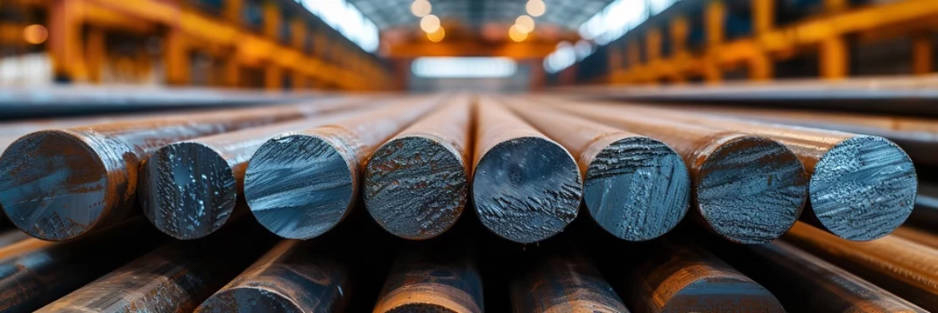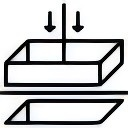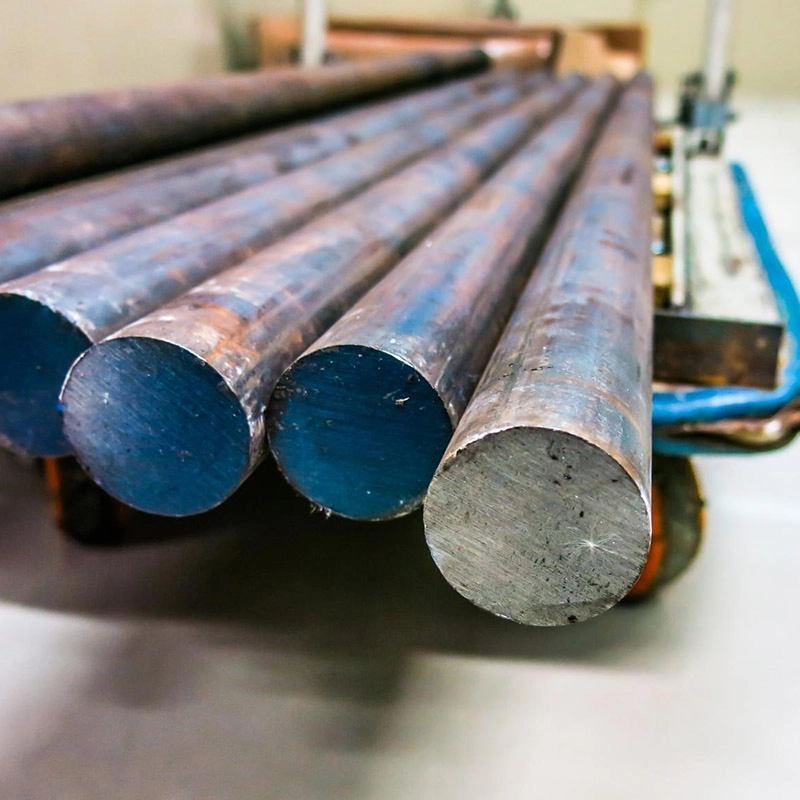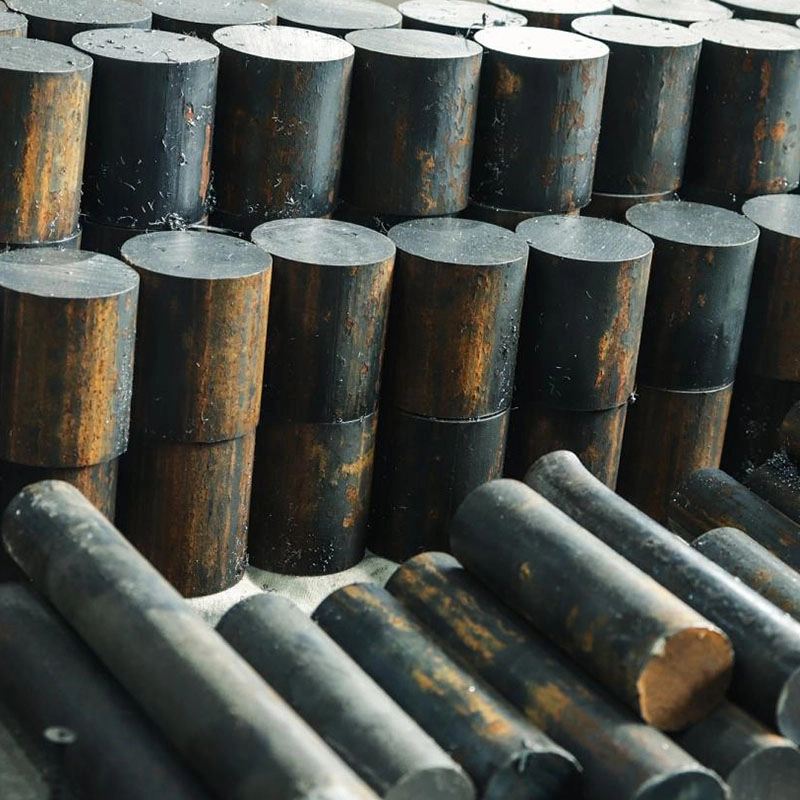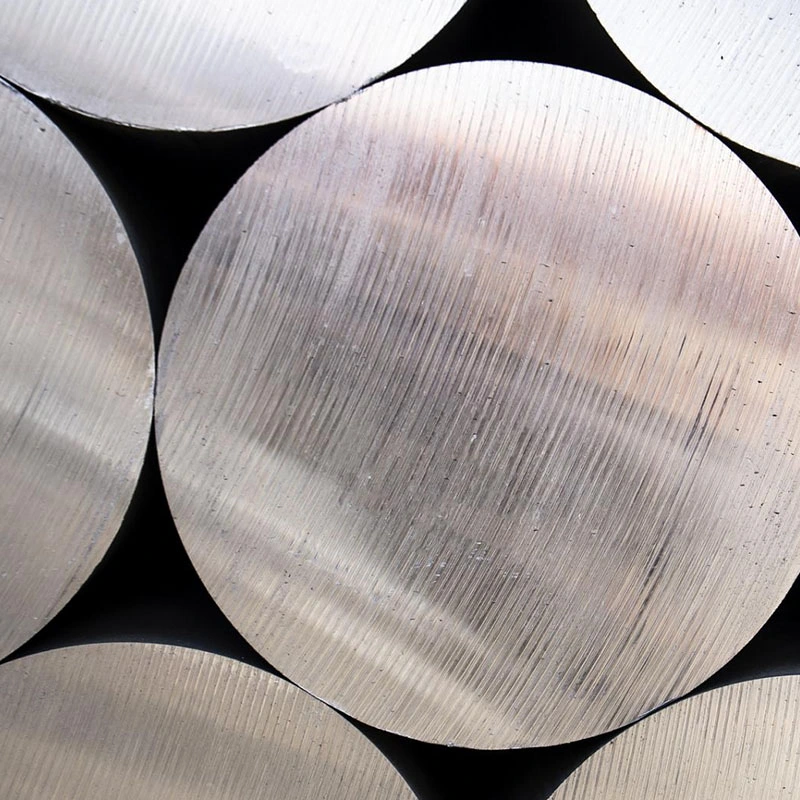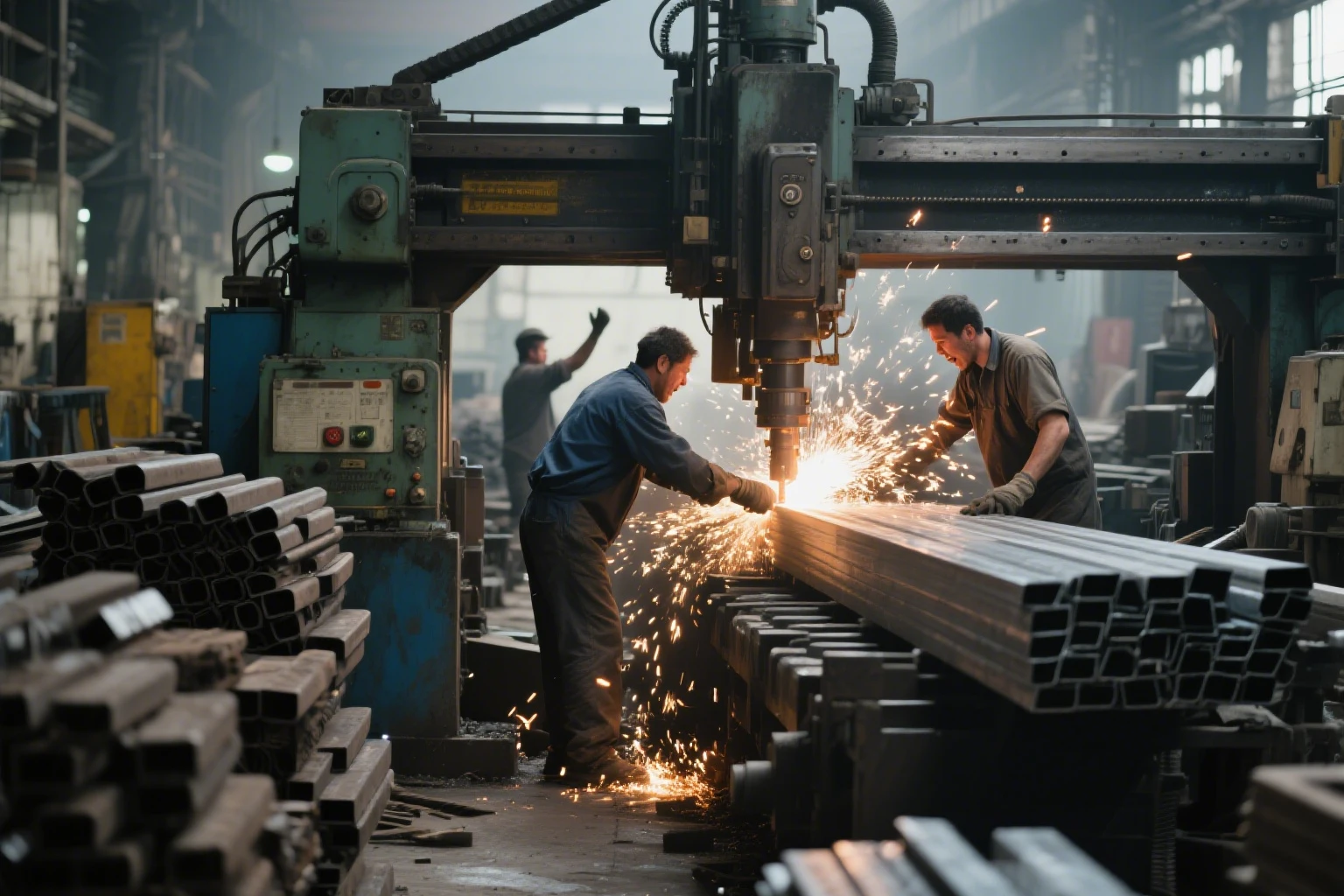Vorheizung H13 Werkzeugstahl
Vorheizen ist ein Muss vor der Wärmebehandlung von H13 werkzeugstahl. Es ist der Stahl zur Wärmebehandlung vorbereitet. Langsames Erhitzen verhindert Stress und Schock. Dies hält den Stahl stark und stabil.
- Erhitzen Sie den Stahl allmählich auf 750 ° C - 850 ° C.
- Steuern Sie den Temperaturanstieg sorgfältig.
- Stellen Sie sicher, dass sich sogar die Wärme über den Stahl verteilt.
H13, ein heißes Werkzeugstahl, verarbeitet Wärme und Müdigkeit gut. Das Vorheizen stärkt diese Stärken. Es bereitet den Stahl auf Austenitisierung und Löschung vor. Scharfe Heizung reduziert Risse und Verziehen. Dies hält die wichtigsten Merkmale des Stahls intakt.
Austenitisierungsphase in der Wärmebehandlung
Verfahren
- H13 Werkzeugstahl auf 1000 ° C - 1050 ° C erhitzen.
- Lassen Sie die Stahlkonstruktion in Austenit verwandeln.
- Lassen Sie Carbon- und Legierungselemente gut mischen.
Diese Änderung baut eine Basis für Härte und Verschleißfestigkeit nach dem Löschen auf.
Funktion
Austenitisierung mischt Carbide und Legierungen gleichmäßig im Stahl. Dies setzt ein einheitliches Härtung beim Löschen fest. Es hilft auch, H13 mit hohen Temperaturen zu bewältigen, ohne Kraft zu verlieren.
Hot Work Tool Stahl hält eine Härte von 40 bis 50 Stunden bei 500–700 ° C. Dies macht es großartig für harte Jobs wie das Casting und Schmieden.
Löschen des H13 -Werkzeugstahls
Verfahren
- H13 auf seine austenitisierende Temperatur erhitzen.
- Kühlen Sie es schnell mit Öl oder erzwungener Luft.
- Verwandeln Sie Austenit in harte, spröde Martensit.
Funktion
Das Löschen von H13 erhöhen die Härte und Stärke von H13. Es hält auch Zähigkeit. Der Prozess sorgt durchgehend mit stetigen Eigenschaften. Dies ist der Schlüssel für Jobs, die Haltbarkeit und Verschleißfestigkeit benötigen.
Hot Work Tool Stahl unterstützt tiefes Löschen. Es erreicht sogar Härte. Dadurch können H13 -Werkzeuge wiederholte Wärmezyklen ohne Brechen behandeln.
Temperieren zur Stärkung des H13 -Werkzeugstahls
Verfahren
- Wärme abgeschreckt H13 bis 500 ° C - 600 ° C.
- Ein paar Stunden halten.
- Wiederholen Sie dies bei Bedarf für gewünschte Merkmale.
Funktion
Das Temperieren schneidet die Sprödigkeit und hält die Härte. Es erleichtert Belastungen durch das Löschen. Es steigert auch die thermische Stabilität. Dies hilft H13, unter extremen Bedingungen stark zu bleiben.
Mit einem intelligenten Legierungsmix, einschließlich Chrom (CR) und Molybdän (MO), dauert H13 über 1.000 Wärmezyklen ohne Risse. Dadurch wird der temperierte H13 perfekt für Hochdruckjobs wie die Gussformen und Schmiedenstirme perfekt.
Durch sorgfältiges Befolgen dieser Schritte - Weating, Austenitisierung, Löschen und Temperieren - liefert H13 Tool Steel erstklassig, spitzenmäßig material leistung für harte industrielle zwecke.
Spannungslinderung H13 Werkzeugstahl
Verfahren
- Hitze H13 bis 600 ° C - 650 ° C.
- 1–2 Stunden halten.
- Langsam abkühlen lassen, um den Aufbau von Stress zu vermeiden.
Dies reduziert die inneren Belastungen durch Bearbeitung oder frühere Behandlungen, ohne die Kerneigenschaften des Stahls zu ändern.
H13 gewinnt viel von Stresslinderung. Der Inhalt mit hoher Legierung macht es anfällig für Stress. Langsames Abkühlen senkt das Risiko eines Verziehens oder des Knackens. Dies stellt sicher, dass der Stahl stabil und stark bleibt.
Funktion
Stresslinderung steigert H13 Komponentenleben und Leistung. Es reduziert sich in späteren Stufen wie dem Löschen oder Bearbeitung. Heißes Werkzeugwerkzeugstahl hält 40 bis 50 HRC Härte bei 500–700 ° C. Dies passt zu Jobs, die enge Toleranzen und Wärmestabilität benötigen.
Spannungslinderung Vorbereitet H13 für Hochstressaufgaben wie die Gussformen. Es verbessert die Resistenz gegen thermische Müdigkeit. Durch die Lockerung innerer Belastungen verhandelt H13 wiederholte Wärmezyklen, ohne die Festigkeit zu verlieren.
Endinspektion und Qualitätsprüfungen
Die endgültigen Überprüfungen sind entscheidend, um sicherzustellen, dass H13 -Werkzeugstahl strenge industrielle Standards entspricht. Tests überprüfen Härte, Struktur und Größengenauigkeit.
Metallographische Prüfungen überprüfen die Mikrostruktur des H13. Gut behandelte HSS-basierte HSS-Basis von Wolfram und Molybdän. Kobaltbasierte Typen können 65 Top-Top-Basis haben. H13 braucht überall Härte für zuverlässige Leistung.
Härtetests sind ein großer Teil von Qualitätskontrollen. Die Fähigkeit von H13, bei hohen Temperaturen hart zu bleiben - die rote Härte - wird gründlich getestet. Ein Test erwärmt den Stahl auf 580–650 ° C, hält eine Stunde und wiederholt sich viermal, bevor sie die Härte überprüfen. Dies bestätigt die Stärke von H13 unter harten Bedingungen.
Größenüberprüfungen verwenden präzise Tools, um sicherzustellen, dass das Produkt Toleranzen entspricht. Alle Probleme können die Zuverlässigkeit der Komponenten beeinträchtigen.
Wählen Sie hitzebehandelte Stahl für Ihr Projekt
Sind Sie bereit, Ihre Industrieprojekte zu steigern? Promispecial® Top-Tier H13 Tool Steel bietet unschlagbare Zähigkeit und Zuverlässigkeit. Dieses Material ist mit einer intelligenten Mischung aus Chrom und Molybdän gefertigt und lacht über 1.000+ Heizung /cooling Zyklen, ohne aufzugeben. Unabhängig davon, ob Sie die Formen der Stanze formen oder Schmiedingern aushämmern, es wird mit der Hitze behandelt, wenn andere zerbröckeln.
Hier ist, warum Profis es wählen:
- Bleibt steinfest (40-50 HRC), selbst unter sengenden 500-700 ° C-Bedingungen
- Den über 100.000 Casting -Läufe dauert - das ist 3x länger als Schnäppchenstähle
- Schnitt Wartungskopfschmerzen und Produktionsstopps ab
- Verbreitet jedes Mal die Hitze gleichmäßig auf rasiermesserscharfe Präzision
Von Autofabriken bis hin zu Raketenworkshops funktioniert unser hitzebehandelter H13 härter, sodass Sie es nicht müssen. Nicht mehr alle paar Monate ersetzen abgenutzte Teile. Nur konsistente Ergebnisse und dickere Gewinnmargen. Warum sich mit „gut genug“ Stahl zufrieden geben, wenn Sie das wahre Arbeitstier haben können?
Geben Sie sich nicht mit weniger zufrieden. Investieren Sie noch heute in unseren H13 -Werkzeugstahl für eine überlegene Zuverlässigkeit und Effizienz. Kontaktieren Sie uns Jetzt bei https://www.promispecial.com/, um Ihre Bestellung aufzugeben oder mehr darüber zu erfahren, WIE H13 Ihr nächstes Projekt verändern kann!
FAQ
Q: Was passiert während der Austenitisierungsphase?
A: Austenitizing erhitzt H13 bis 1000 ° C - 1050 ° C und verwandelt seine Struktur in Austenit. Dadurch können Kohlenstoff und Legierungen gleichmäßig mischen und die Bühne für Härte und Verschleißfestigkeit nach dem Löschen festlegen.
Q: Wie wirkt sich das Löschen auf den H13 -Werkzeugstahl aus?
A: Das Löschen von Kühlungen H13 nach der Austenitisierung, oft in Öl oder Luft. Es verwandelt Austenit in harte, spröde Martensit, fördert Härte und Stärke und hält gleichzeitig die Zähigkeit für langlebige Werkzeuge aufrecht.
Q: Was ist der Zweck des Temperierens von H13 -Werkzeugstahl?
A: Die Temperaturerwärme löscht H13 bis 500 ° C - 600 ° C, um die Britterung zu verringern. Es verbessert die Zähigkeit, lindert Spannungen und verbessert die thermische Stabilität, wodurch der Stahl unter extremen Bedingungen zuverlässig ist.
Q: Wie kommt es zu Spannungslinderung von H13 -Werkzeugstahl?
A: Spannungslinderung erhitzt H13 bis 600 ° C - 650 ° C und kühlt es langsam ab. Dies reduziert die inneren Belastungen durch Bearbeitung oder frühere Behandlungen, senkt das Verrückt von Verziehen oder Rissen und die Gewährleistung der Stabilität.
Q: Mit welchen Tests werden die Qualität der H13 -Werkzeugstahl überprüft?
A: Zu den Qualitätsüberprüfungen gehören metallographische Untersuchungen für Mikrostruktur, Härtetests für rote Härte (Stabilität bei 580–650 ° C) und dimensionale Inspektionen, um Toleranzen sicherzustellen. Diese bestätigen H13 erfüllt die industriellen Standards.

